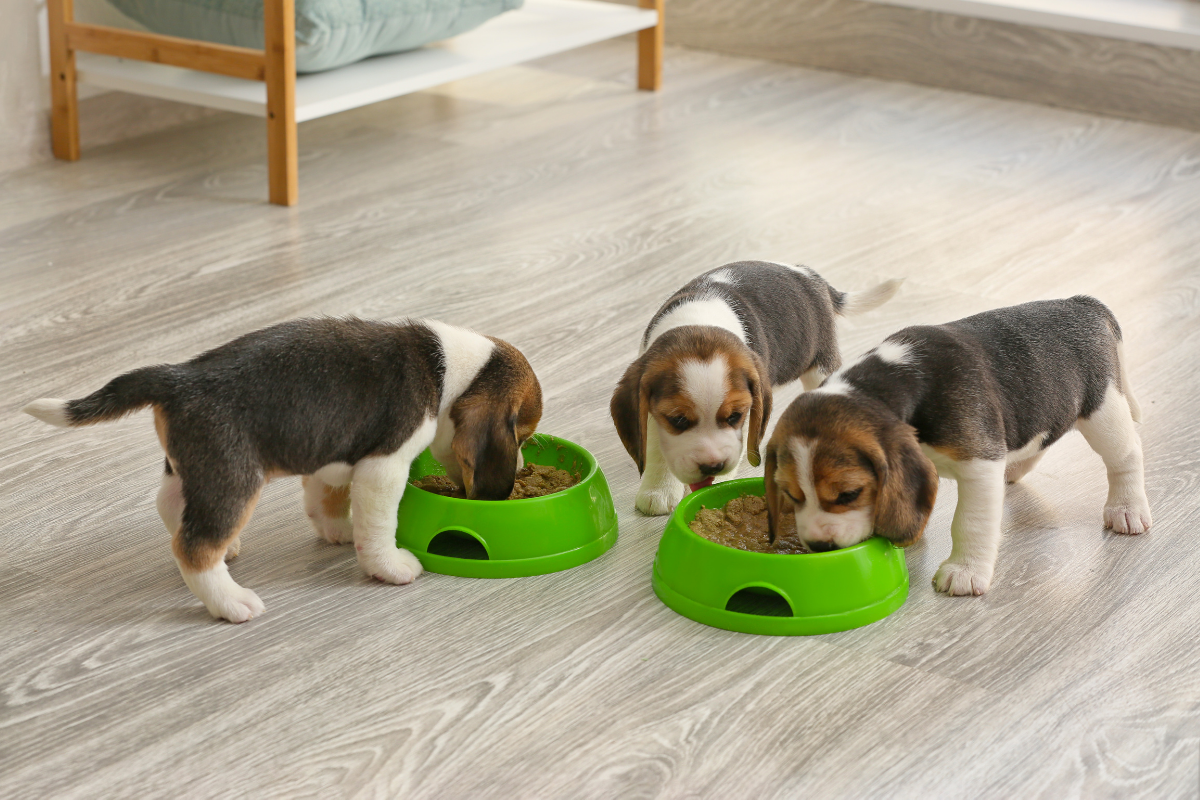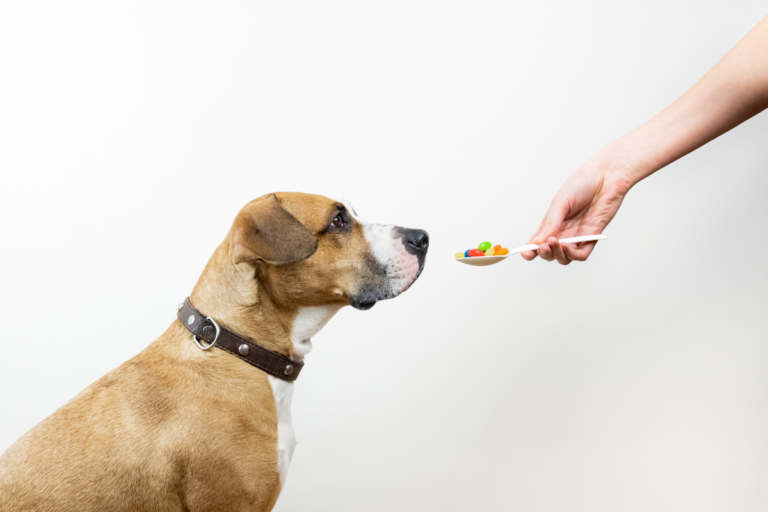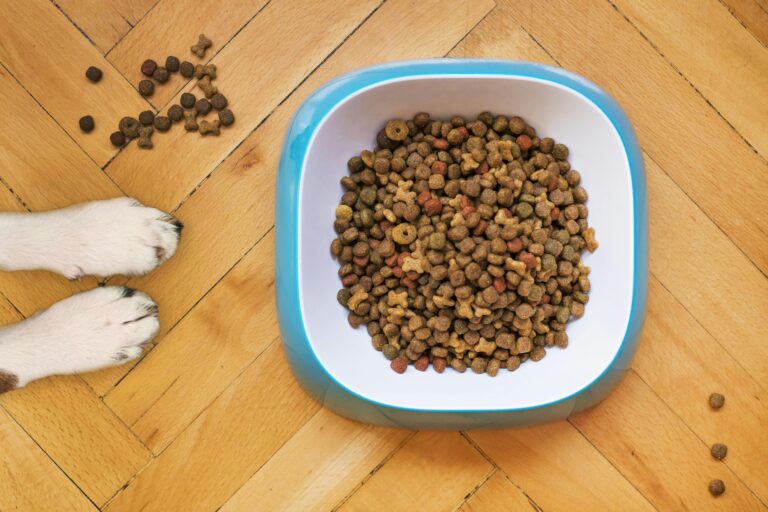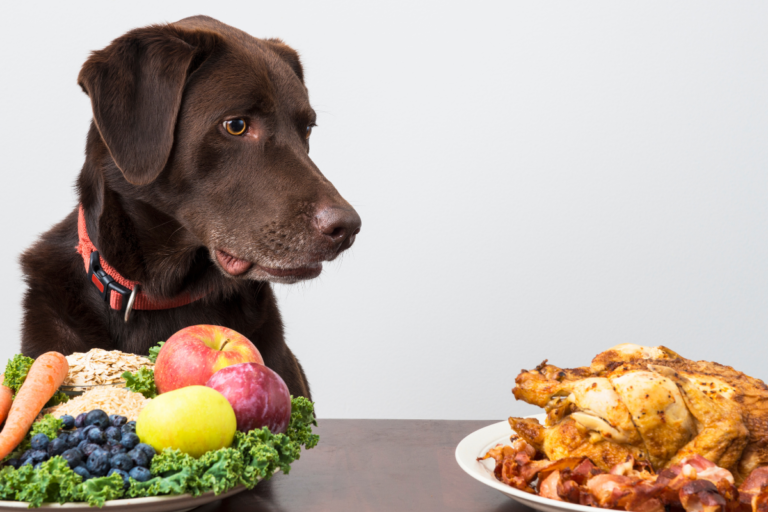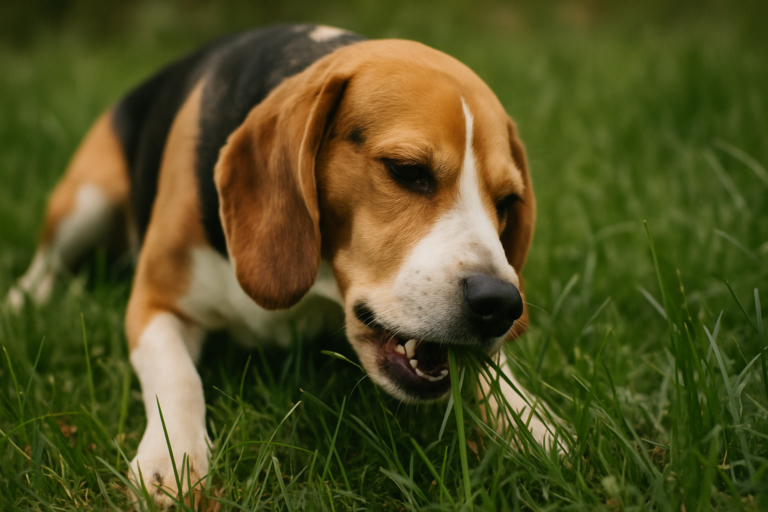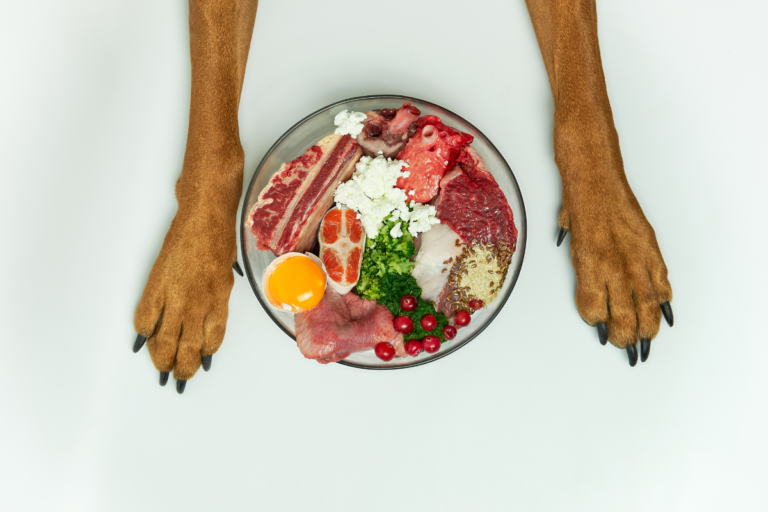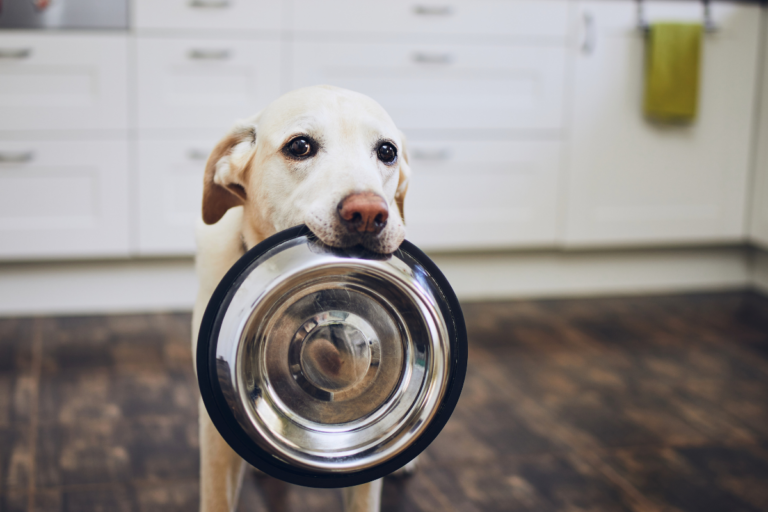Puppy Love on a Plate: Mapping Out the Ideal Food Chart
Understanding Puppy Nutrition
Importance of Puppy Nutrition
Hey, folks! Puppies – adorable, wiggly little bundles of joy – need some special TLC when it comes to their diet. They’re not just pint-sized versions of grown-up dogs. They’ve got their own set of nutritional quirks! Giving them the right food from the get-go is like laying down the track for a fun healthy adulthood. They need a menu packed with good proteins, fats, and all those vitamins and minerals to keep up with their turbocharged growing spurt.
It’s all about watching their shape, not just the amount in their bowl. You don’t want to have a chubby or a skinny mini on your hands. A healthy diet helps dodge those pesky health issues, leaving you with a bouncing, happy pup.
| Age (Weeks) | Feedings Per Day |
|---|---|
| 6-12 | 4 |
| 3-6 Months | 3 |
| 6-12 Months | 2 |
American Kennel Club’s Puppy Feeding Take
Curious for more? Check out our puppy nutrition chart for all the nitty-gritty details.
Puppy Feeding Fundamentals
Alright, let’s talk chow time. Picking the best food and serving the right scoop is key. Those fancy-shmancy premium puppy foods? Worth it. They pack a punch nutritional-wise, so your little buddy feels full and fabulous with fewer chow downs compared to cheaper brands.
The grand feast begins once they’re off mom’s milk, usually around five weeks old and wrapped up by eight. Scan those labels for top-notch proteins, fats, carbs, and good old calcium to keep ’em brimming with energy.
Switching to the Crunchy Stuff:
- For the teeny tiny pups: Dry unmoistened food is their jam by 12 to 13 weeks.
- For the big softies: Dunk into crunchy chow by nine to 10 weeks.
| Breed Size | Transition to Dry Food (Weeks) |
|---|---|
| Small-Breed | 12-13 |
| Large-Breed | 9-10 |
(Thanks to Pawlicy)
Scooping the right stuff into their bowl ain’t rocket science—just make sure to peek at those ingredient lists. A diet that clicks with your pup’s vibe is a game-changer. For the lowdown on specific breeds, hop over to our puppy diet chart.
Feeding Recommendations for Puppies
Feeding our little furballs right is like helping them build solid foundations for a good life. We’ll chat about when to dish it out, how much to give, and just when they should make the leap to big-dog chow.
Feeding Frequency for Puppies
Puppies are energy machines and need grub more often than their grown-up pals. We’re talking four meals a day in their earliest days. They burn through it like there’s no tomorrow, so those first couple of months, they’re always scarfing down dinner (Grange Co-op).
| Age (Weeks) | Meals Per Day |
|---|---|
| 6 – 13 | 4 meals |
| 14 – 24 | 3 meals |
| 24+ | 2 meals |
Got a pup around 5 weeks old? They’re about ready for that switch to puppy food, and should be all set by the 8-week mark (Pawlicy).
Portion Control for Puppies
When it comes to serving sizes, eyeballing your pup’s shape is the way to go. Puppies differ a lot in how much they need to chow down, depending on who they are and how much energy they’re burning every day. Don’t just measure out food by the cup; watch how they’re growing and fill the bowl accordingly (American Kennel Club).
| Pup Size | Daily Calories (kcal) |
|---|---|
| Small (up to 20 lbs) | 390 – 530 kcal |
| Medium (20 – 50 lbs) | 600 – 800 kcal |
| Large (50+ lbs) | 900 – 1,300 kcal |
Looking for more pointers on portions? Try checking out our puppy nutrition chart.
Transitioning to Adult Food
Switching them over to adult grub should be slow and steady so they don’t end up with belly aches. Here’s how you can ease them in:
- Days 1-3: Go with 75% puppy chow, 25% grown-up chow.
- Days 4-6: Even it out to 50/50.
- Days 7-9: Flip the ratio to 25% puppy chow, 75% grown-up chow.
- Day 10 and beyond: 100% adult chow.
For our big ol’ puppies, they get to switch around the 15 to 24-month mark. Smaller guys usually grow up faster, hitting big dog status by 9 months. Make sure to chow down on that breed-specific stuff to get just the right nutrients (American Kennel Club).
Want the 411 on primo puppy meals? Peek at our choosing high-quality puppy food.
By nailing the meal times, helping watch their weight, and knowing when to make the big switch, we’re all set to help our puppies grow into fine, healthy hounds. Need more tailored advice? Our dog diet charts have your back for those on-the-dot dietary needs.
Essential Nutrients for Puppies
Knowing what your little fur buddy needs to chow down on is key to making sure they grow up into healthy, happy dogs. Here’s a little bit about what puppies need: proteins, fats, carbs, vitamins, and minerals.
Proteins for Puppies
Proteins are like the magic beans for your pup’s growth. Puppies are like growing weeds, and PetMD says they gobble up more protein than adult dogs to fuel their turbo-charged development. The AAFCO (Association of American Feed Control Officials) says puppy food should have at least 22% protein.
| Nutrient | Requirement (Dry Matter) |
|---|---|
| Growth | 22% |
| Maintenance (Adult Dogs) | 18% |
A diet packed with protein helps your pup’s tissues form and grow strong. Want meal tips? Check out our dog diet chart.
Fats for Puppies
Fat isn’t just for flavor. For puppies, fats are power-packed and help them soak up vitamins like a sponge. VCA Hospitals says these fatty acids are the secret sauce for shiny coats and healthy skin. Puppy chow often packs extra fats to keep up with their bouncing energy.
| Nutrient | Function |
|---|---|
| Fat | Energy, skin health, shiny coat |
Pick foods with high-quality fat so your pup stays bouncy and their coat looks fabulous. Dive into our puppy nutrition chart for more tips.
Carbohydrates for Puppies
Sure, proteins and fats are the main players, but carbs have their bit to play in your pup’s diet too. Dogs have this neat trick of breaking down carbs into energy, thanks to enzymes that munch starches and sugars (VCA Hospitals). Cooked grains and complex carbs can give pups energy and help their bellies stay happy.
| Nutrient | Contribution |
|---|---|
| Carbohydrates | Energy, digestive health |
Smartly adding carbs supports balanced energy and helps tummies feel good. Sniff out our guide on best raw diet for dogs for more insights.
Vitamins and Minerals for Puppies
Vitamins and minerals are like little superheroes for puppies’ health. Each plays a role—keeping bones strong, teeth chomp-ready, and those immune systems tough-as-nails.
| Vitamin/Mineral | Function |
|---|---|
| Calcium & Phosphorous | Bone growth |
| Vitamin A | Vision, immune health |
| Vitamin D | Bone health |
| Iron | Oxygen transport in blood |
Most puppy chow is fortified with all the good stuff. To keep your pup in tip-top shape, check out professional advice with our vet nutritionist recipes.
By knowing what your little buddy needs and using a puppy diet chart, you can make sure they grow strong, live long, and wag more.
Feeding Your Pup: Big or Small, They’ve Got Different Needs
Let’s chat about feeding those adorable bundles of joy, our puppies. They’re energetic, they’re growing, and, oh boy, are they hungry! But not all puppies are created equal, especially when it comes to what they munch on. Depending on whether they’re as tiny as a Chihuahua or as whopping as a Great Dane, their dietary needs vary quite a bit. Let’s dive into the must-knows for feeding both small and large breed puppies.
Small Puppies, Big Appetites
Our little guys, like Chihuahuas and Dachshunds, are quite the calorie machines. They’ve got high metabolisms and reach their full size quicker – we’re talking 10-12 months here. This speed-racer of growth means they need food that’s packed with punch – nutrients, calories, you name it!
Their tummies may be tiny, but their need for nourishment isn’t. More frequent, yet smaller meals should be on the menu. Think of their diet like a power-packed smoothie: lots of high-quality proteins, smart fats, and the right mix of vitamins and minerals. And those kibbles? They need to be smaller, just like them.
| Nutrient | Recommended Intake (per cup) |
|---|---|
| Protein | 22-28% |
| Fat | 15-20% |
| Calcium | 1-1.5% |
| Phosphorus | 0.8-1.2% |
Scoot over to our puppy nutrition chart if you’re wondering exactly how to portion out those pint-sized meals.
Going Large? Here’s the Deal
Moving on to the big boys, like your Great Danes and Golden Retrievers. These pups take their time growing – sometimes up to 2 years before they’re full-grown giants. But that means special care to avoid those pesky joint problems.
They don’t need to pack on the pounds fast, so aim for a diet that’s a bit easier on the fats and minerals. This keeps them from shooting up too quickly and helps those big bones grow nice and steady.
| Nutrient | Recommended Intake (per cup) |
|---|---|
| Protein | 26-30% |
| Fat | 12-16% |
| Calcium | 0.8-1.2% |
| Phosphorus | 0.6-1% |
Our puppy diet chart can give you a hand with feeding these lovable lumberjacks-in-the-making.
Nutrient Know-How
Whether your pup’s pocket-sized or hefty, they all need meals packed with goodness to help them thrive. Our guides, like the dog diet chart, are here to help you navigate nutritional support tailored for different breeds.
Find the right food fit and watch them grow healthy and happy. For those considering other feeding styles, check out the best raw diet for dogs and veterinary nutritionist recipes to give your furry buddy the best start to life.
Puppy Food Types and Guidelines
Wet vs. Dry Puppy Food
When picking the best grub for our pups, we’re often caught between wet and dry food. Both work fine as long as they’re balanced and complete for our little fur balls (Purina).
Wet Puppy Food
Wet food boasts higher moisture levels, making it a go-to for hydrating and easy chewing. Great for puppies struggling with their first tiny teeth or those who are a bit fussy at mealtime.
| Upsides | Downsides |
|---|---|
| Keeps pups hydrated | A bit pricier |
| Easier on little jaws | Won’t last long once opened |
| Tasty for picky eaters | Watch out for dental buildup |
Dry Puppy Food
Dry food, or kibble, is all about convenience. It lasts longer, and chewing it helps keep those puppy teeth clean.
| Upsides | Downsides |
|---|---|
| Convenient and shelf-stable | Might not be a hit with all pups |
| Helps fight plaque | Not as hydrating |
| Easier on the wallet | Harder to chew for sensitive mouths |
Mixing wet and dry food? A smart bet that covers all bases, just make sure to balance the calories with your pup’s daily needs. For more tidbits on when to feed, peek at our puppy nutrition chart.
Choosing High-Quality Puppy Food
Feeding our furry kids the right stuff is a game-changer. We want to hunt down foods packed with top-notch proteins, fats, carbs, calcium, and DHA (Purina).
Must-Have Ingredients:
- Top-Notch Protein: For strong muscles. Real meat should kick off the list.
- Fats: They’re energy powerhouses and help with vitamin absorption.
- Carbs: Quick energy hits—whole grains and veggies do the trick.
- Calcium and Phosphorus: For building bones and teeth that won’t quit.
- DHA: This Omega-3 champ supports brain and peeper health.
Also, don’t forget to check out breed-specific foods. Large breeds need a bit extra to grow brisk and healthy, and small breeds need food that keeps pace with their turbo metabolism (Purina).
If you’re leaning towards custom diets, consider digging into our vet nutritionista’s recipes for some tailored meal magic.
We hope this rundown helps you figure out the best meal plan for your puppy pals. Stick with a routine feeding schedule, like outlined in our puppy diet chart, to keep them healthy and thriving.
Feeding Schedule for Puppies
Getting our puppies on the right track with their meals is like setting them up for a lifetime of health and happiness. We want to make sure they munch just the right amount to grow strong and healthy. Let’s figure out how to do this.
Customizing Feeding Plan
Every little furball’s eating plan should fit like a glove, considering their size, type, and age. Puppies, unlike their grown-up pals, need to chow down more often. Here’s a quick cheat sheet:
| Puppy Age | Meals a Day |
|---|---|
| 4 to 12 weeks | 4 |
| 12 weeks to 6 months | 3 |
| 6 months and older | 2 |
Feeding them three to four times when they’re tiny—between four and 12 weeks—is smart. After 12 weeks, we can tone it down to twice a day (Weave). This way, they get all the vitamins and energy they need as they grow up.
Monitoring Body Condition
We gotta keep an eye on our pup’s figure rather than their bowl. Their looks and heft should clue us into how much grub they need. Here’s what to watch:
- Ribs: Easy to feel, not to see.
- Waist: Noticeable from above.
- Tummy: A nice tuck when gazing from the side.
Checking in on how chunky our pups are can make sure we’re feeding them just right. No pup wants to eat too much or too little, and for the nutritional nerds, our dog diet chart and puppy nutrition chart offer loads of insight.
Developing a Feeding Routine
Keeping food times regular helps puppies get their mealtime groove on. Divvying up their daily food between two to three small meals at set times works like a charm (Purina). Doing it this way makes things predictable and eases their worries. Here’s a peep at a feeding schedule:
| Time | What’s Happening? |
|---|---|
| 7:00 AM | Breakfast |
| 12:00 PM | Lunch |
| 5:00 PM | Dinner |
| 9:00 PM | Night Snack (if needed) |
Switching our pups from their baby food to adult chow should be a gentle move over a few days to dodge belly aches (American Kennel Club). If you’re scratching your head wondering what to do, talking to a vet nutritionist might help.
To wrap it up, setting the right feeding flow for our pups makes sure they get what they need and sprout healthily. Watching them chow down at the right times, while tracking their growth, is key. For all the feeding facts you can imagine, puppy diet chart and labrador dog food chart are our go-to guides.
